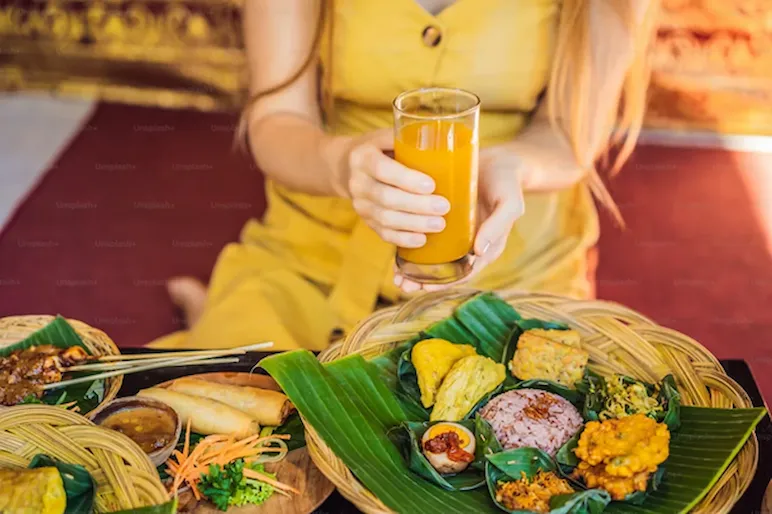Balinese people have their own unique spiritual persepective of life and death, with many ceremonies dedicated to the cycle of life. One such sacred ceremony that takes place in the heart of Balinese culture is the Magedong-Gedongan, a ritual performed during pregnancy to ensure the well-being of both the unborn child and the expectant mother. Through this article, we delve into the intricacies of this unique ceremony, exploring its various variations, symbolic elements, and the profound meaning it holds for the Balinese people.
Sacred Beginnings: The Significance of Magedong-Gedongan Pregnancy Ceremony
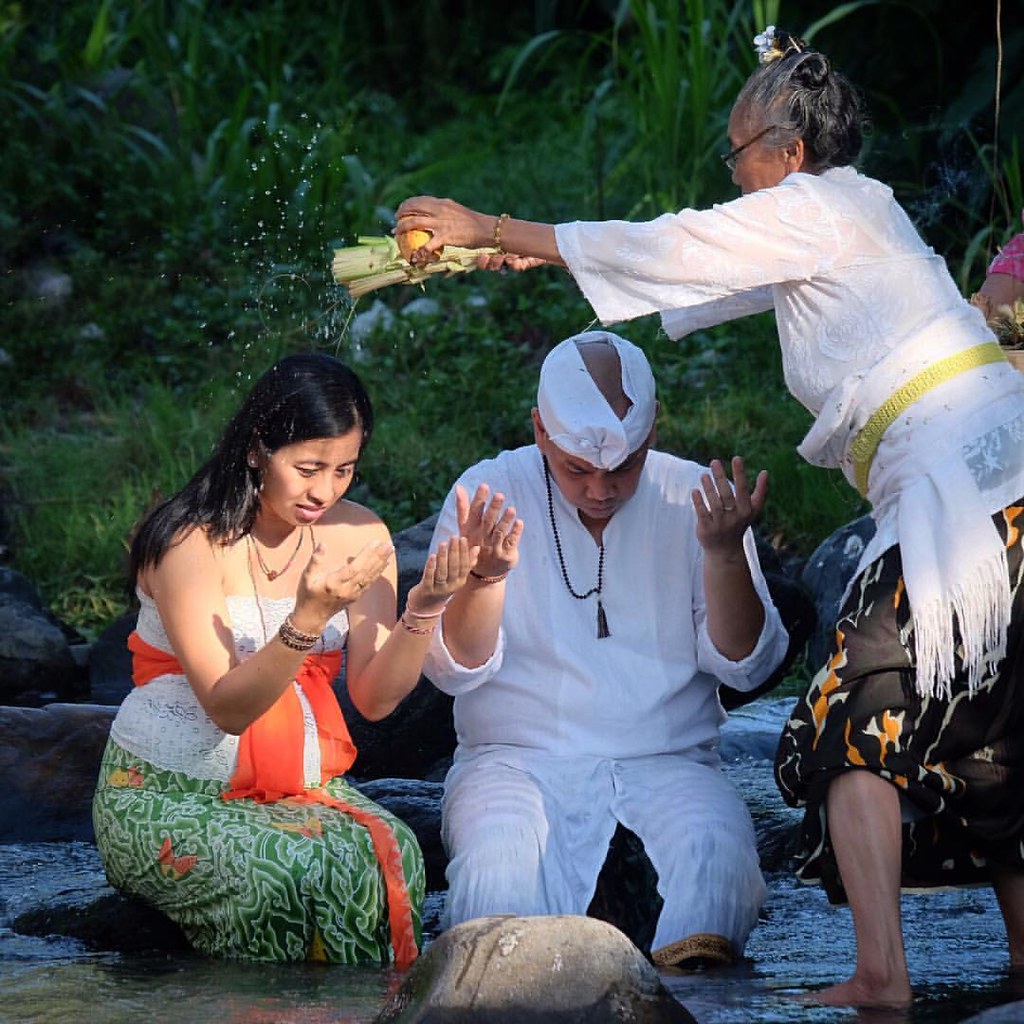
The Essence
Magedong-Gedongan is a crucial ceremony conducted around the 5th to 7th month of pregnancy, symbolizing the purification and protection of the unborn child in the womb. Rooted in the belief that the soul of an ancestor is preparing to reincarnate, the ceremony aims to maintain harmony within the mother's womb and safeguard the child from unseen forces.
Ritual Variations
The Magedong-Gedongan ceremony exhibits diverse variations across different regions and communities in Bali. From Sesajen Abyakala to Prayascita, each variation serves a specific purpose, including cleansing the baby from negative influences and expressing gratitude to the divine for the impending arrival. Variations also extend to offerings like Abyakala, Pagedongan, Sesayut Pengambean, Canang, and Daksina, showcasing the richness of Balinese customs.
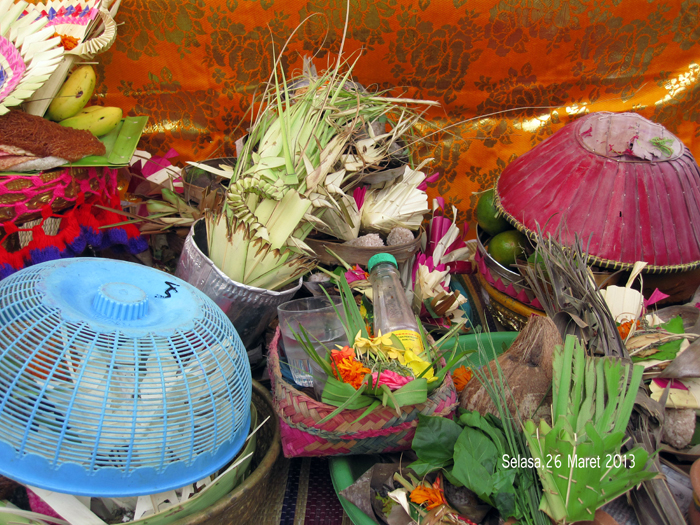
Symbolism and Symbolic Elements
The ritualistic elements of Magedong-Gedongan are steeped in symbolism, reflecting the Balinese worldview. The Abyakala and Prayascita offerings aim to dispel negativity, while Daksina expresses gratitude to the spiritual guides. Symbolic items like Janur, representing the swastika for auspiciousness, and Alas Kulit Sayut, a pandanus mat, convey deep spiritual meanings related to purification and protection.
The Spiritual Journey of the Unborn
The Balinese view the process of conception and pregnancy as a spiritual journey involving the interplay of divine and earthly elements. Sang Hyang Lumanglang, the god of sight, initiates the union of "white desire" and "red desire," leading to the incarnation of an ancestor's soul in the womb. The fetus is seen as a manifestation of both the macrocosmos and microcosmos, where gods contribute to the creation of bodily elements.
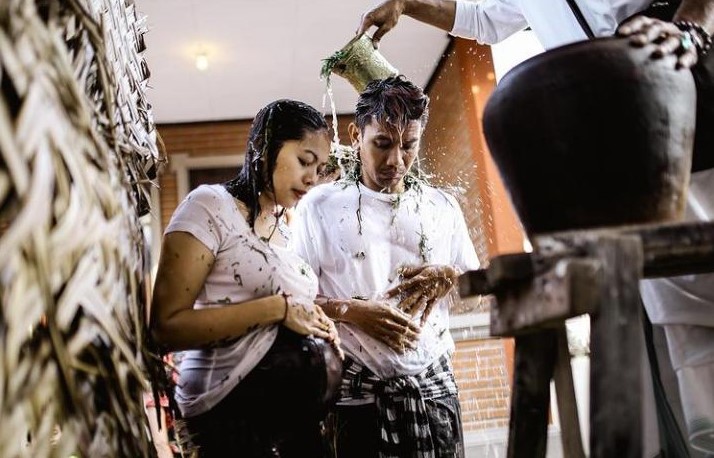
Cleansing and Protection Processions
Generally, the Magedong-Gedongan ceremony encompasses a series of rituals aimed at cleansing and protecting the unborn child and its mother
Ritual Bath in the Symbolic River
The ceremony often begins with a symbolic bath in a nearby river, representing the sacred Ganges. This ritual signifies purification and the cleansing of any negative influences.
Gender Determination Rite
The husband, using a stick with a cordon, pierces a large leaf containing water, determining the gender of the unborn child. This moment is crucial and adds an element of anticipation to the ceremony.
Pengrujakan Offering
The couple is presented with a pengrujakan offering, a dish containing the six tastes of life – sweet, sour, salty, hot, bitter, and acidic. This offering represents the balance and diversity of life experiences.
Symbolic Elements and Holy Water
Throughout the ceremony, symbolic elements like Janur and Alas Kulit Sayut play a significant role. Holy water is sprinkled, expressing gratitude and seeking divine blessings for a harmonious pregnancy.
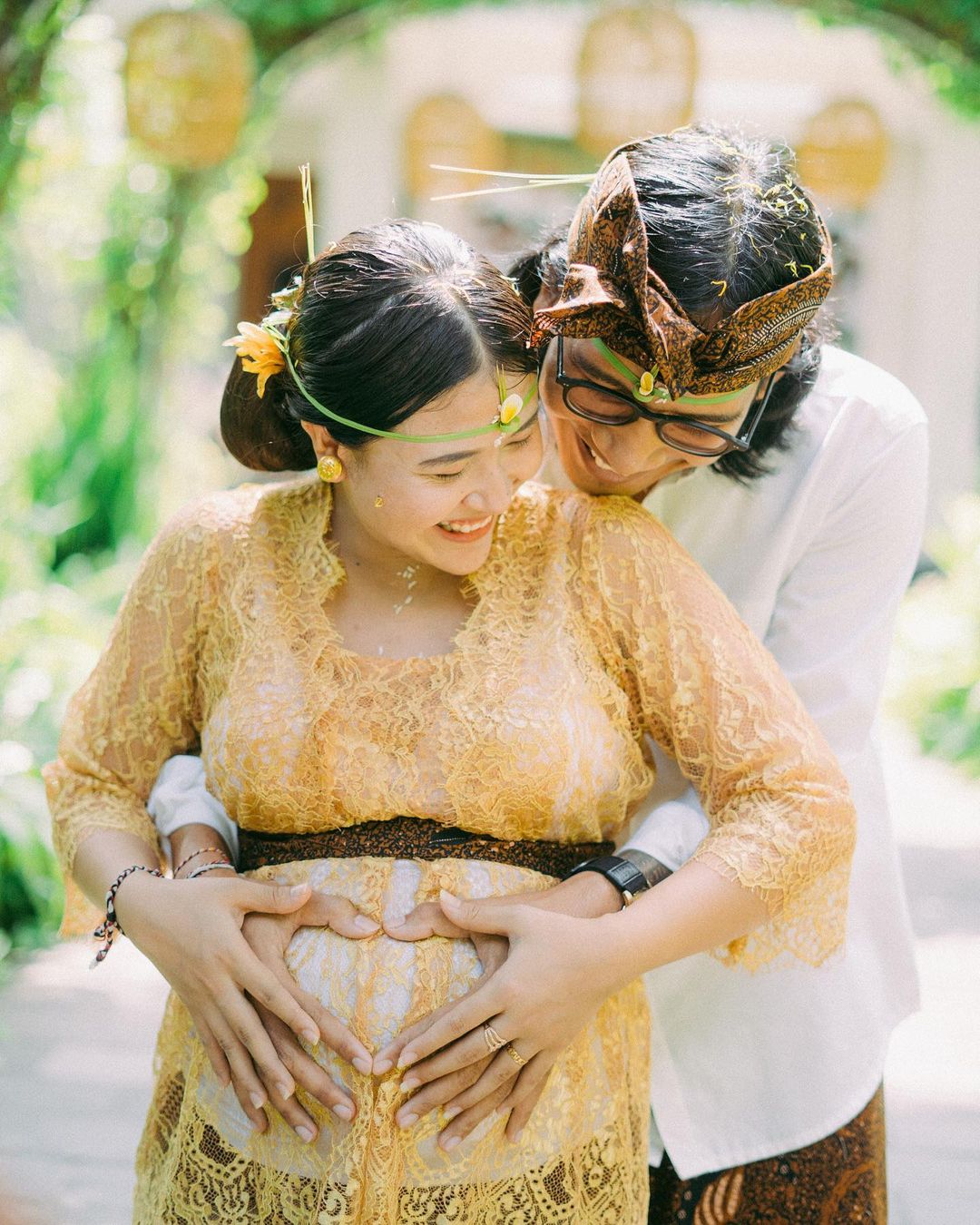
The Grand Finale
Following the Magedong-Gedongan, the expectant parents patiently await the arrival of their child, engaging in daily rituals while upholding order in their lives. The ceremony concludes with the birth of the child, who, according to Balinese belief, carries the essence of a deified ancestor, known as "dewa."
Magedong-Gedongan unveils a profound connection between the spiritual and physical realms, emphasizing the intricate dance of cosmic forces during the journey from conception to birth. Deeply rooted in tradition, this sacred ritual reflects the Balinese people's commitment to maintaining harmony, expressing gratitude, and welcoming new life with reverence.



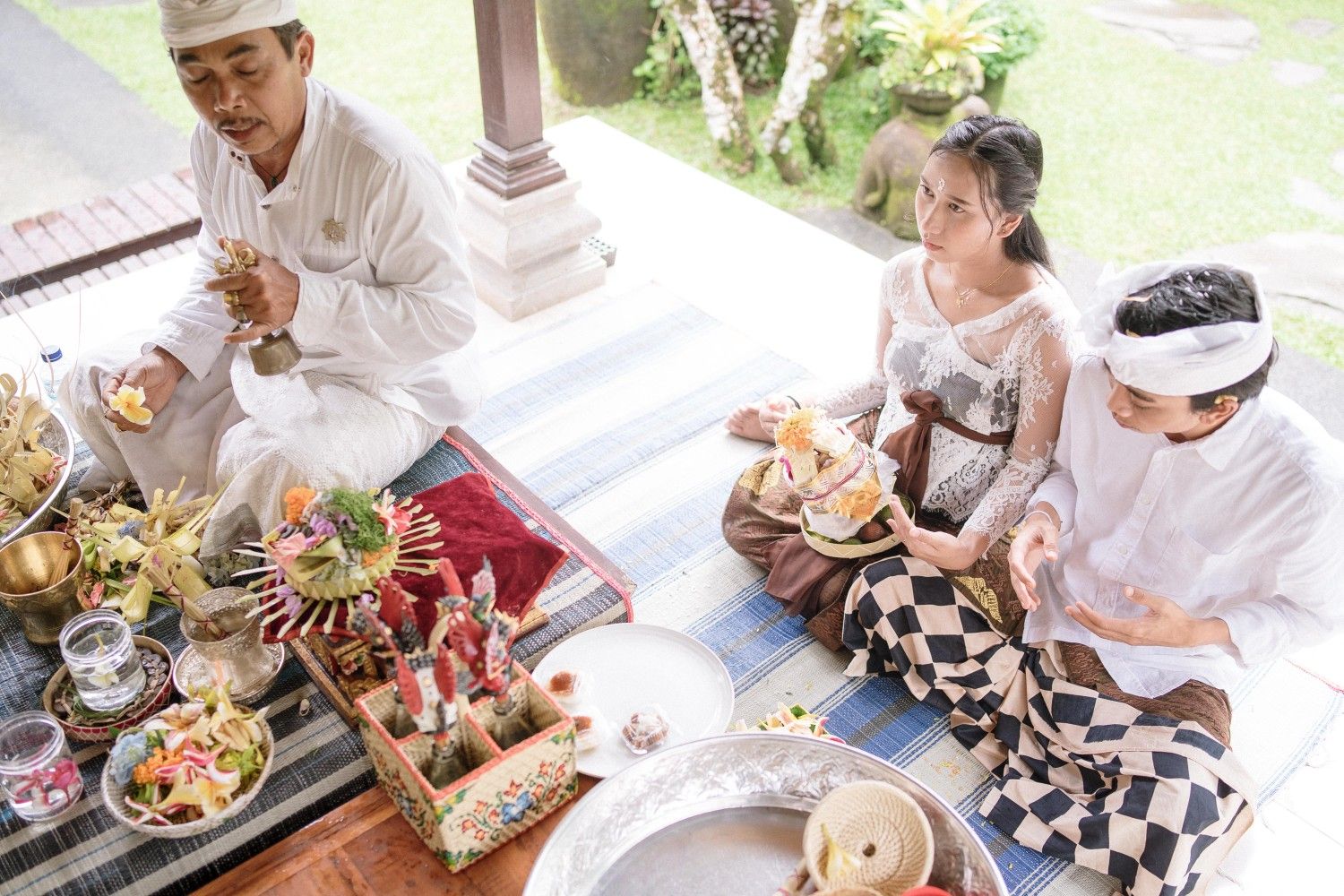
 Billy Bagus
Billy Bagus
 Feb 23, 2024
Feb 23, 2024






